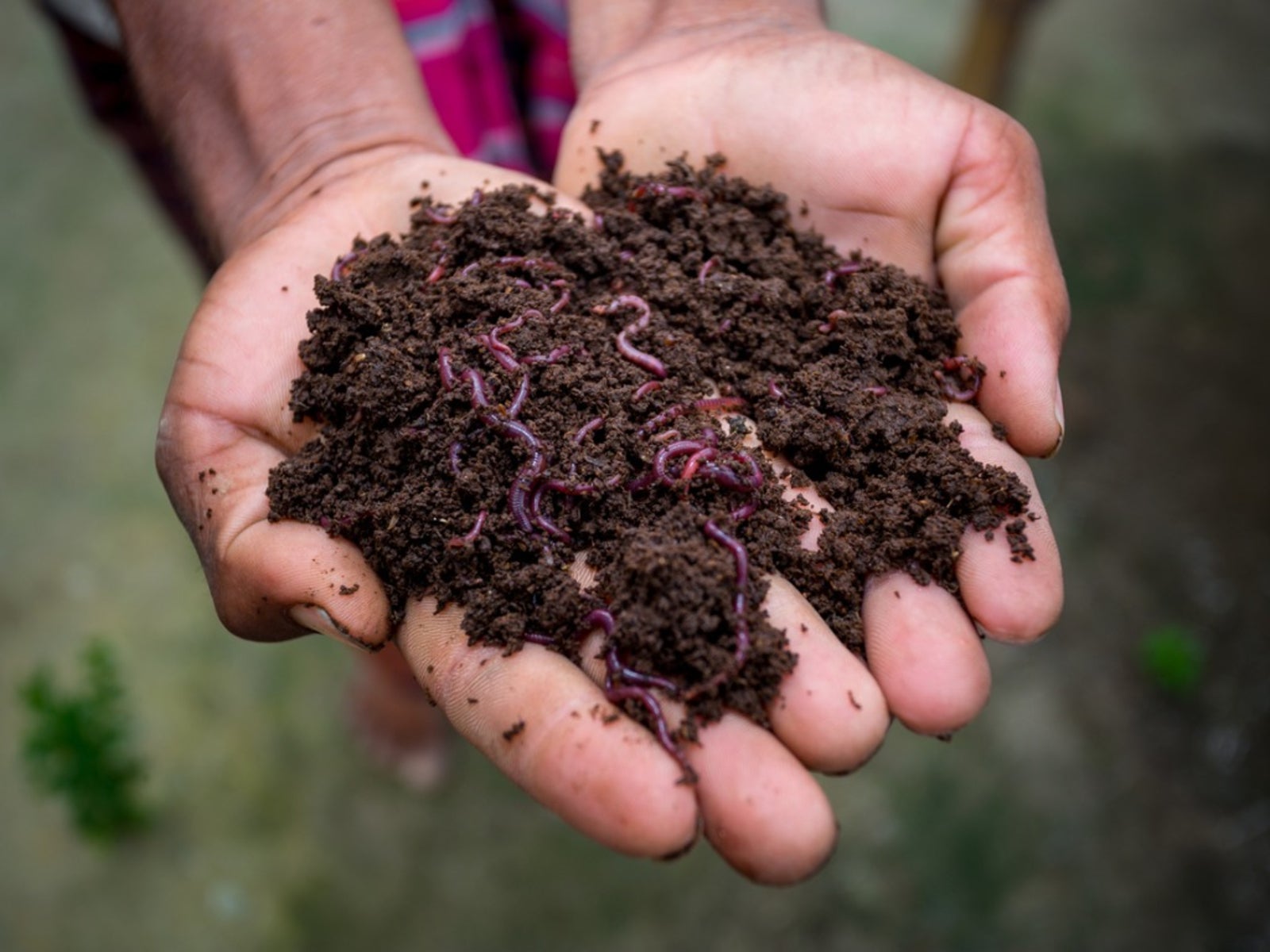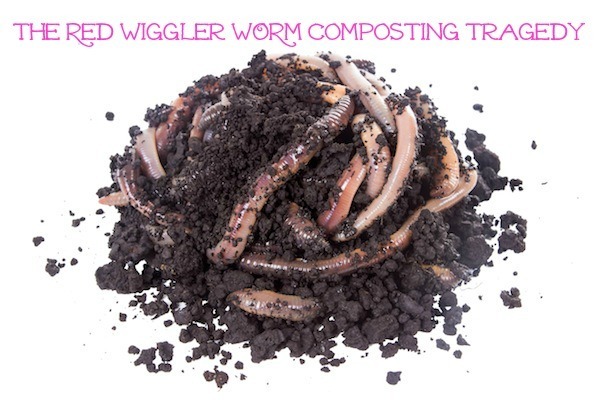Understanding the Perks of Red Wiggler Composting: Just How This Reliable Approach Transforms Organic Waste Into Nutrient-Rich Soil Modifications
Red Wiggler composting, utilizing the varieties Eisenia fetida, offers a compelling technique to natural waste administration, transforming kitchen scraps and yard particles right into valuable dirt changes. This technique not only enhances dirt fertility yet also addresses pushing ecological concerns, including land fill waste reduction and greenhouse gas exhausts. As we discover the ins and outs of this process, the complex benefits it uses might reveal unexpected understandings into lasting practices and environmental balance. Recognizing these measurements might motivate a reevaluation of exactly how we regard waste and its potential contributions to a healthier earth.
What Are Red Wigglers?
Red wigglers, clinically understood as Eisenia fetida, are a species of earthworm that play an essential duty in vermicomposting systems. These worms are identified by their reddish-brown shade, fractional bodies, and a distinctive ability to prosper in organic-rich environments, making them optimal for composting applications - Red Wiggler Composting. Unlike their garden-dwelling counterparts, red wigglers favor to occupy the upper layers of soil, where decomposing matter is abundant
Generally gauging in between 3 to 4 inches in length, red wigglers have a high reproductive price, allowing them to multiply rapidly under optimal problems. They possess a special digestion system that enables them to refine organic waste efficiently, transforming it right into nutrient-rich castings, which are extremely beneficial for plant development.
Their resistance to differing moisture levels and temperature ranges further improves their energy in vermicomposting arrangements, making them a favored option amongst composting lovers. In addition, red wigglers are aerobic organisms, which necessitates a well-aerated composting atmosphere, making sure reliable disintegration. Understanding the biological traits and actions of red wigglers is important for optimizing their use in lasting waste monitoring methods.

Advantages of Vermicomposting
Taking advantage of the power of vermicomposting deals a multitude of farming and ecological benefits. First of all, it substantially reduces organic waste in landfills, therefore decreasing methane discharges, a powerful greenhouse gas. By diverting food scraps and lawn waste to vermicomposting, we sustain an even more lasting waste administration system.
Additionally, vermicomposting boosts dirt health. The spreadings created by red wigglers are abundant in crucial nutrients, germs, and enzymes, improving dirt framework and fertility. This nutrient-rich amendment promotes robust plant growth and boosts water retention, minimizing the need for chemical plant foods.
In addition, vermicomposting fosters biodiversity in the dirt ecosystem. The intro of helpful microbes from worm spreadings help in condition reductions and nutrient biking, producing a much healthier environment for plants.
Financially, vermicomposting reduces the prices connected with chemical inputs and garbage disposal. Gardeners and farmers can cultivate top quality fruit and vegetables at reduced costs, adding to food protection and sustainability.
Exactly How to Beginning Composting
Starting a composting endeavor can be a fulfilling and simple process. To start, choose a suitable location that is well-drained and obtains partial sunlight. This will aid keep a balanced temperature, vital for the composting procedure. Next off, select a compost bin or produce an assigned area in your yard, ensuring it is easily accessible for harvesting and adding products compost.
Collect natural materials such as cooking area scraps, lawn waste, and shredded paper. Go for a well balanced mix of 'environment-friendly' products, high in nitrogen (e.g., fruit scraps, coffee premises), and 'brownish' products, rich in page carbon (e.g., dried out fallen leaves, cardboard) A ratio of roughly 2:1 green to brown materials is suitable.
Beginning layering your products, ensuring adequate air flow by transforming the heap regularly. This promotes aerobic disintegration, speeding and reducing smells up the process. Monitor wetness degrees; the compost must seem like a wet sponge however not overly damp.
Nutrient Account of Vermicompost
Composting, particularly with red wigglers, generates a nutrient-rich product understood as vermicompost. In addition, it supplies micronutrients like iron, calcium, and magnesium, cultivating robust plant advancement and improving dirt health and wellness.
The microbial task existing in vermicompost additionally improves its account, presenting valuable microorganisms and fungi that advertise nutrient availability and uptake in plants. This organic element aids in subduing plant diseases and boosting dirt framework, bring about enhanced water retention and aeration.

Environmental Impact of Composting
The ecological influence of composting, specifically via the usage of red wigglers, is extensive and complex. This technique considerably lowers the quantity of organic waste sent out to landfills, which consequently decreases greenhouse gas discharges, particularly methane-- a read this potent contributor to climate change. By drawing away organic materials from landfills, red wiggler composting not only helps minimize ecological degradation but likewise advertises lasting waste administration practices.

In addition, composting adds to carbon sequestration, as the process catches carbon dioxide from the atmosphere and shops it in the dirt. This all-natural procedure help in combating climate adjustment while enriching the dirt - Red Wiggler Composting. On the whole, red wiggler composting provides a practical, green solution for waste administration and environmental sustainability, promoting healthier ecological communities and a much more lasting future
Verdict
In verdict, Red Wiggler composting offers as site an effective method for transforming natural waste into useful soil amendments. The procedure not only improves dirt fertility and framework yet additionally reduces ecological issues connected with waste disposal.
Red Wiggler composting, employing the species Eisenia fetida, presents an engaging strategy to organic waste management, transforming cooking area scraps and backyard particles into important dirt modifications. Unlike their garden-dwelling counterparts, red wigglers choose to live in the upper layers of soil, where rotting issue is bountiful.
The spreadings generated by red wigglers are abundant in essential nutrients, microbes, and enzymes, boosting soil framework and fertility. The nutrient-rich byproducts of red wiggler activity boost dirt structure, increase water retention, and promote biodiversity within the dirt ecosystem.In verdict, Red Wiggler composting offers as an efficient method for converting organic waste right into important dirt changes.